|
Platycerium Superbum One spore patch for each fertile frond. |
|||||||||||||||||||||||||||||||||
| Platycerium superbum is
native to Australia and for many years was classified as a P. grande.
In about 1970, the two were split into two different species. For this
reason there may be a lot of confusion as to which species you are growing
as both were called P. grande and it is taking a while for the trade
to catch up with the two different species. Because of this confusion,
many P. superbum
were labeled P. grande, and many P. superbum were labeled
P. grande. When affordable DNA testing comes available in the near
future, you will be able to get a better handle on which species you have.
Shield fronds are deeply lobed and may reach 4 ft tall. Upper edges
extend forward to form a catch basin. Once the shield fronds reach 2
ft. fertile fronds can be expected. Before the shield fronds die and curve
inward, a new green shield frond will cover the older frond while still
green. Each fertile frond has one spore patch, oval to nearly
triangular and brown when mature. Large reclining foliar fronds light
green in color. Does not pup. Hardy to 30°F (–1.1°C) for short periods,
although prolonged cold temperatures not tolerated. Likes brighter light
than the average staghorn. |
|||||||||||||||||||||||||||||||||
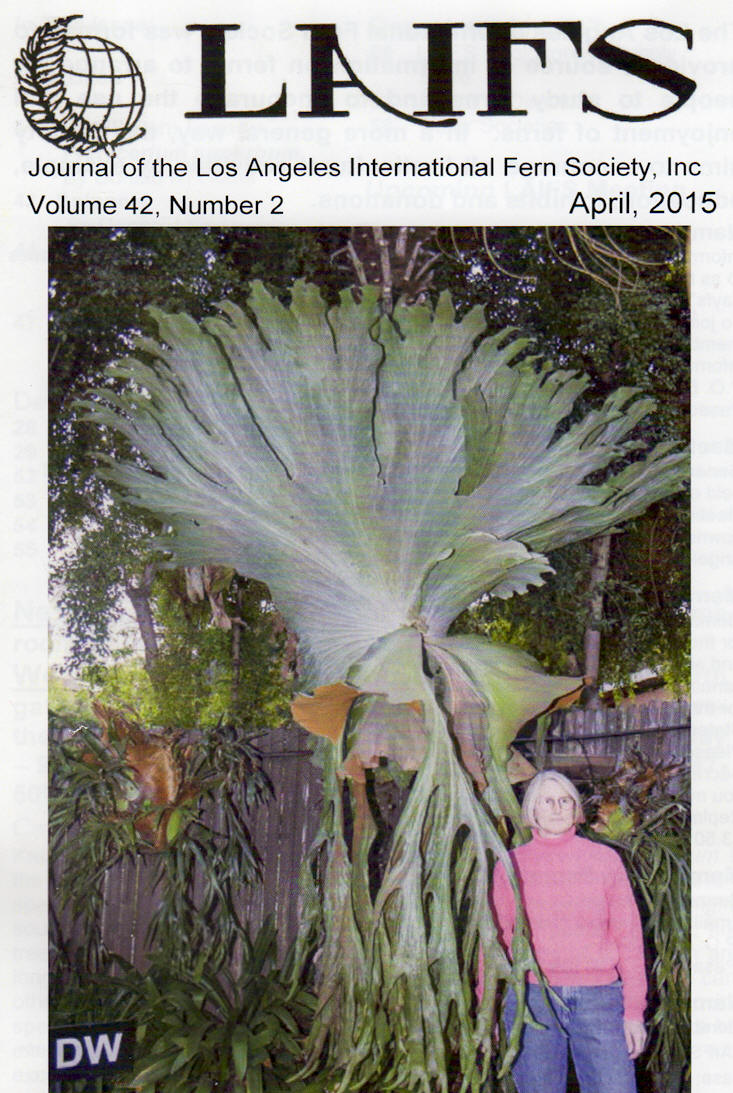 The P. superbum shown on the right is on
the cover of the April 2015 issue of the LAIFS Journal and has grown in
Southern California on a palm tree. Recently the tree was removed and
the platy was relocated to the Huntington Library. This very large
example of P. superbum appears to be almost 20 ft tall. The P. superbum shown on the right is on
the cover of the April 2015 issue of the LAIFS Journal and has grown in
Southern California on a palm tree. Recently the tree was removed and
the platy was relocated to the Huntington Library. This very large
example of P. superbum appears to be almost 20 ft tall. The P. grande is generally considered difficult to grow, whereas the P. superbum is usually considered easy to grow and very tolerant of full sun. In nature, some P. superbum are found growing on rocks. It can tolerate temps down to freezing. There are reports of the fertile fronds of P. superbum getting a sunburn on the upper surface of the spore patch lobes when the temperature is too high.
* The temp range of the P. grande is probably close to the P. superbum but not quite as cold tolerant.
** Frequently the first fertile frond of P. grande may be undivided
with only one spore patch. |
|||||||||||||||||||||||||||||||||
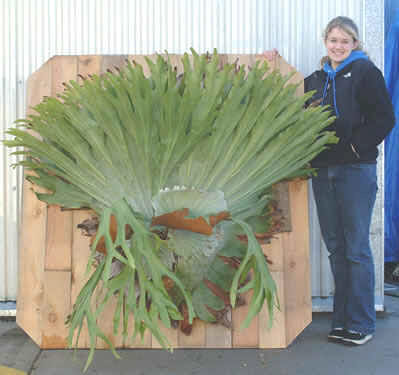 |
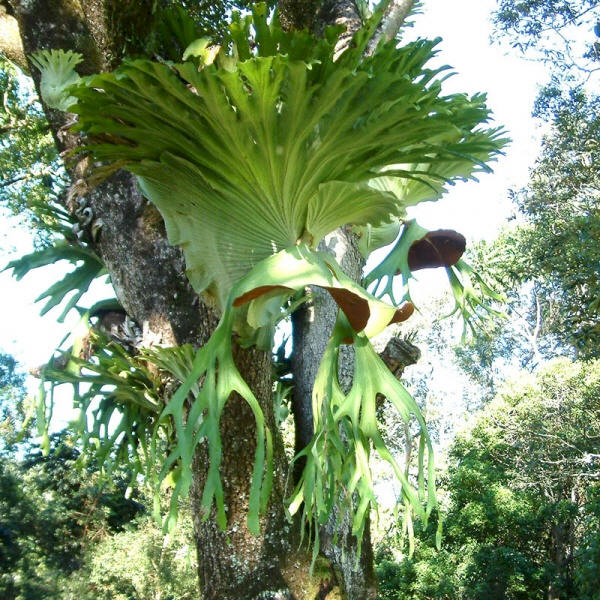 |
||||||||||||||||||||||||||||||||
| Research has shown there are many
different forms of the P. superbum and here we sill try to identify the
differences. |
|||||||||||||||||||||||||||||||||
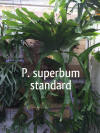 The
photo on the left has been presented as the standard P. superbum.
It is from Don Callard's collection in San Diego. The photo
illustrates how the shield fronds open to form a basket to collect debri.
Click on photo for a larger image. The
photo on the left has been presented as the standard P. superbum.
It is from Don Callard's collection in San Diego. The photo
illustrates how the shield fronds open to form a basket to collect debri.
Click on photo for a larger image. |
|||||||||||||||||||||||||||||||||
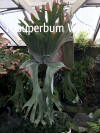 The
photo on the right is a P. superbum cv 'White" from Don Callard's collection
in San Diego. Click on photo for a larger image. The
photo on the right is a P. superbum cv 'White" from Don Callard's collection
in San Diego. Click on photo for a larger image. |
|||||||||||||||||||||||||||||||||
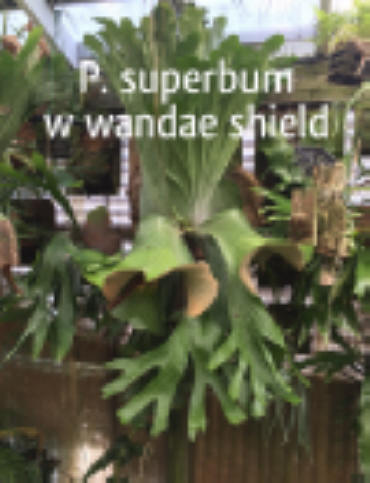 This
photo on the left is from Don Callard's collection in San Diego. It is a P.
superbum with 2 fertile fronds with one spore
patch on each frond. What makes this interesting is the shield frond
is that of a P. wandae. It is not known if this is a cultivar of P.
superbum, a hybrid of wandae x superbum, or possibly something else.
Click on photo for a larger image. This
photo on the left is from Don Callard's collection in San Diego. It is a P.
superbum with 2 fertile fronds with one spore
patch on each frond. What makes this interesting is the shield frond
is that of a P. wandae. It is not known if this is a cultivar of P.
superbum, a hybrid of wandae x superbum, or possibly something else.
Click on photo for a larger image. |
|||||||||||||||||||||||||||||||||
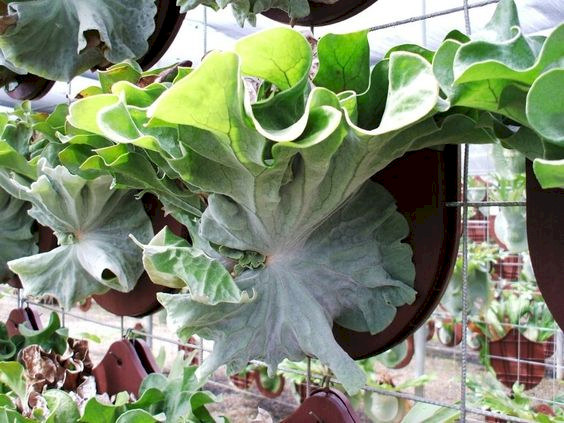  P. superbum Cabbage A little know cultivar of the P. superbum is
the P. superbum Cabbage (left) and t Andrew Poole of Perth Australia has graced us with more photos of the Platycerium superbum Cabbage which can be viewed at this link
|
|||||||||||||||||||||||||||||||||

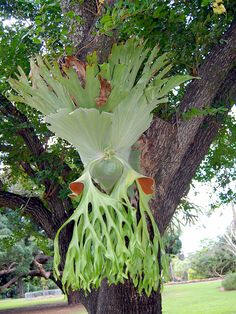
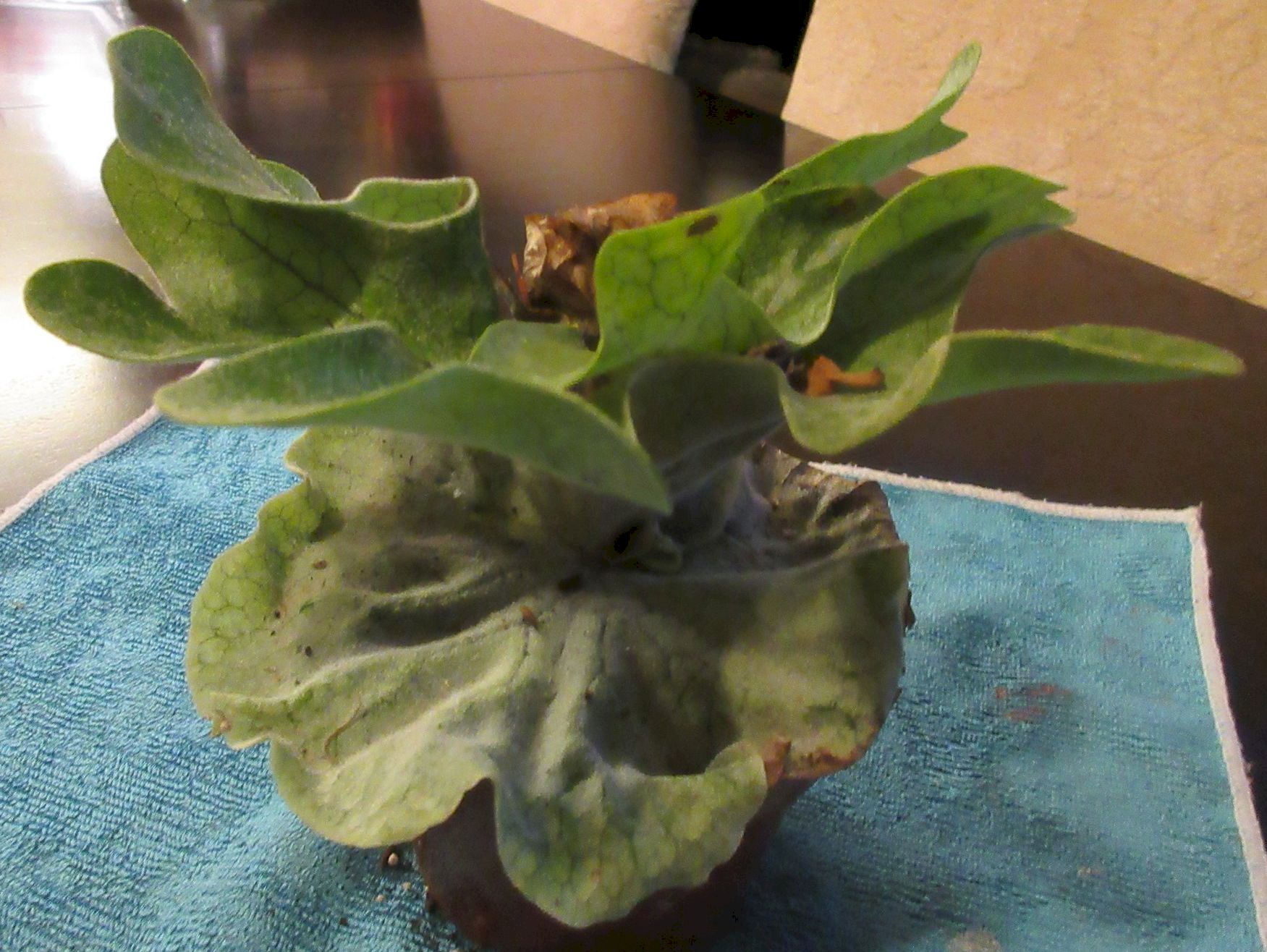 he
P. superbum Cabbage Dwarf (2 on right). Our friends on Facebook
Planet Platycerium say there is one spore patch on the fertile frond which
puts it in the P. superbum family.
he
P. superbum Cabbage Dwarf (2 on right). Our friends on Facebook
Planet Platycerium say there is one spore patch on the fertile frond which
puts it in the P. superbum family.